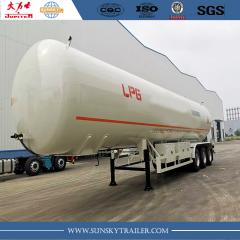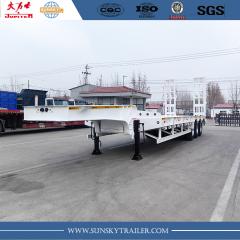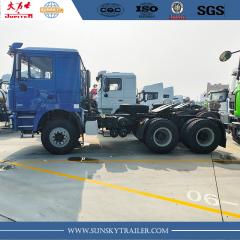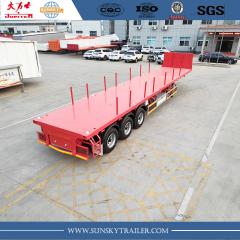-
 3 Axle Lpg Gas Tank Semi Trailer
3 Axle Lpg Gas Tank Semi Trailer
-
 Low Bed Trailer
Low Bed Trailer
-
 SHACMAN F3000 Tractor Truck
SHACMAN F3000 Tractor Truck
-
 Flatbed Pillar Trailer
Flatbed Pillar Trailer
SUNSKY VEHICLE, a manufacturer of flatbed semi-trailers, has found that the Flatbed Pillar Trailer i...
Many who are involved in transport freight for a living are aware that there are numerous options when it comes to the trailer they employ. Dry vans and flatbeds are by far the most frequent kind of commercial trailers you'll encounter on the road.

There are a variety of reasons why these two trailers are so popular, forcing owners and fleet managers to assess the benefits and drawbacks of each. Which is the best option for your specific requirements? It all boils down to the job's requirements: Do you require temperature control? Is it possible to load from the top? Is this a platform with more features?
If you're not sure how to choose between a dry van and a flatbed, this post will walk you through the various factors to consider before renting a commercial trailer. You'll feel certain that you're making the right selection for your specific business needs after reading this article.
What's the Difference between a Dry Van and a flatbed trailer?
In the freight transportation industry, dry van trailers are the most prevalent form of trailers. These trailers are completely enclosed and weatherproof, making them ideal for transporting costly or sensitive products.
Flatbed trailers are popular because of their versatility and capacity to transport large loads. Flatbeds are the greatest alternative for transporting automobiles, construction equipment, and other big commodities because they have no enclosure and can be loaded from the sides or above.
Dimensions and Specifications
A dry van trailer is an enclosed trailer that pulls behind a semi-truck to transport freight. The cargo unit of a dry van is 53 feet long and 8.5 feet (102 inches) wide as usual. The exterior height is around 13' 6" tall, while the inside height is around 110".
As a result, depending on what you need to transport, how far you need to ship it, under what conditions, and at what rate, there are a variety of dry vans to pick from.
Flatbed advantages
- Flatbeds have a higher maximum hauling capacity than dry vans since they have the choice of a longer length or a deeper well.
- Flatbeds are capable of transporting big goods. Items that are too large to fit inside a dry van trailer, such as large machinery, can be put onto a flatbed trailer for transportation.
- Flatbeds are more adaptable because freight can be loaded via crane from the back, side, or top.
Concluding thoughts
At the end of the day, the decision between a dry van and a flatbed comes down to the type of freight you're transporting and the competence level of your driver. You should generally choose an enclosed dry van if you need to protect your cargo from wind, rain, dust, or anything else it might be exposed to during transit. Flatbed trailers are the best alternative for moving huge loads with extra-large dimensions.




